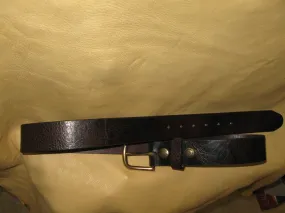Chaparral Cars were a pioneering American automobile racing team and race car developer that engineered, built, and raced cars from 1963 through 1970. Founded in 1962 by American Formula One racers Hap Sharp and Jim Hall, it was named after the roadrunner, a fast-running ground cuckoo also known as a chaparral bird.
Chaparral design were far from normal. In a lifespan that lasted only 8 years, the small team created innovative machines that were so advanced, that the technology can be seen in road cars of today. Other innovations didn’t make it although they have to various degrees been adopted, and then usually banned, by F1 teams. Fan cars for example, creating downforce without the need for wings. Instead the cars were sucked to the track by jet powered vacuums. The same technology is being used in the McMurty fan car which last year smashed the Goodwood Hill record.
The most unusual Chaparral was the 2J. On the chassis' sides bottom edges were articulated Lexan plastic skirts that sealed against the ground (a technology that would later appear in Formula One).
Two fans adapted from a military tank engine were housed at the rear, driven by a single two-stroke twin-cylinder engine.[5]The skirting produced a zone within which the fans could create a vacuum producing downforce on the order of 1.25 to 1.50 g when the car was fully loaded (fuel, oil, coolant). Tremendous gripping power and greater maneuverability at all speeds were produced.
The 2J competed in the Can-Am series and qualified at least two seconds quicker than the next fastest car, but mechanical problems limited its success. It only ran in the 1970 season, after which it was outlawed by the Sports Car Club of America (SCCA). Although originally approved by the SCCA, they succumbed to pressure from other teams who argued that the fans constituted "movable aerodynamic devices". Sanctioning body FIA had banned such devices beginning with the 2E. There were also complaints of debris generated by the fans damaging the following cars. McLaren argued that if the 2J were not outlawed, the Can-Am series would be ruined by its dominance – something McLaren had been doing since 1967. A similar fan was used in Formula One in 1978 later on the Brabham BT46B.
















